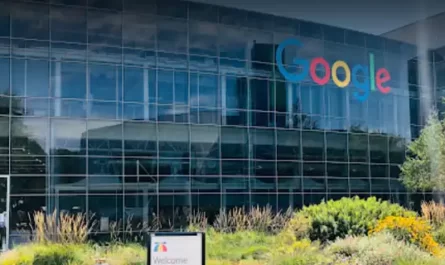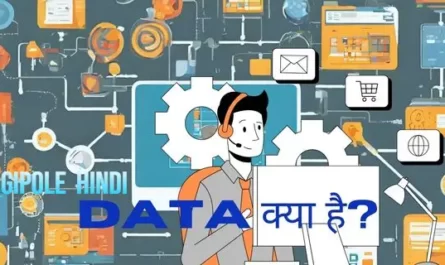In today’s highly digitized world, there would be hardly any person who is not aware of the word MP3, although it is a different matter that not everyone is aware of the full form of MP3.
Every person who is interested in listening to music or is related to any audio files, whether it is streaming podcasts, downloading songs or sharing audio files, must have used this MP3 technology. But it is also true that people use it but they do not have much information about what MP3 is. So in this article we will try to know and understand every technical aspect of it in detail and also try to know the history behind it. We will try to know how MP3 has brought an effective change in digital audio technology and why this audio format became so popular among the people.
Table of Contents
MP3 Full Form: What Does It Stand For?
The term MP3 is directly connected to MPEG-1 Audio Layer III. Although it is a technical term, but in this article we will try to explain it to you in simple language. So the full form of MP3 is “Moving Pictures Experts Group” and it is a standard and international organization of audio and video compression where MPEG-1 is its first standard version and Audio Layer 3 indicates the third layer of audio compression under this standard. Basically MP3 is a process under which audio files are compressed to make the file smaller without losing its sound quality which can be easily stored and shared and this feature has made it very popular among the people.
The Origins of MP3: A Brief History
This file format actually taken in action in the late 1980s. It was started when the Moving Pictures Experts Group was tasked with creating a standard format for digital audio and video. A team of engineers led by German researcher Karlheinz Brandenburg set out to find a way to compress audio files. It was the struggling to find a way to reduce the size of the files as much as possible while maintaining sound quality, in order to develop a simple, efficient and practical technology for everyday use.
At the end of 1993, the MP3 format was officially standardized under the MPEG-1 specification. However, it was not until the late 1990s that the MP3 format gained popularity with the advent of modern systems such as the Internet and portable music players. Platforms like Napster, a peer-to-peer file sharing service provider, revolutionized the ease of sharing these files with users. People suddenly began storing thousands of songs of their choice., the MP3 format was officially standardized under the MPEG-1 specification. However, it was not until the late 1990s that the MP3 format gained popularity with the advent of modern systems such as the Internet and portable music players. Platforms like Napster, a peer-to-peer file sharing service provider, revolutionized the ease of sharing these files with users. People suddenly began storing thousands of songs of their choice.
It was an era and an achievement that made accessing these files a pleasure unimaginable with physical formats like CDs or compact tapes.
Advantages of mp3 file format
The most advance feature of this files format that it can be played on various devices, including personal computers, smartphones, and portable music players.
Aditionally the format allows for parameter settings such as bit rate, sample rate, and stereo options, which can control the sound quality of the audio file .
It’s important to mind that MP3 is a lossy format, meaning that the compression is irreversible, and some of the original data from the source is lost during the compression process.
However, with advancements in technology, it is still possible to have fairly high-quality MP3 music files.
Impact of this technology on the music industry
Here are some key ways in which MP3 technology has influenced the music industry :-
Ⅰ. Digital Music Distribution: Distribution of music by enabling the easy transfer of digital audio files. With the rise of peer-to-peer sharing platforms like Napster and LimeWire in the early 2000s, music enthusiasts could easily download and share these digital files, bypassing the traditional physical distribution methods.
Ⅱ. Decline in physical sales: The popularity of this technology contributed to the decline in sales of physical music such as CDs and records.
This technology has been adopted by consumers due to its many conveniences which can be easily stored, organized and played on various digital devices such as computers, MP3 players and smartphones.
As a result revenue from this exceeded that of physical media, leading to a major change in the sources of income in the industry.
Ⅲ. Independence of creation: This technology played a significant role in democratizing the music industry. It provided facilities for independent artists to distribute their skills directly to a global audience easily avoiding the need for major record labels.
Ⅳ. Rise of online music platforms: Due to the changing technology in the music world, the rise of many online music platforms and streaming services has become possible. Popular online platforms such as Spotify, Apple Music, and YouTube Music are the best example of such an online platforms.
Ⅴ. Copyright and Piracy Concerns: The ease of sharing and distributing MP3 files raised concerns about copyright infringement and piracy within the music industry. Unauthorized sharing of copyrighted music files through peer-to-peer networks led to legal battles and efforts to combat piracy.
History behind MP3 technique
In the year of early 1970s, Professor Dieter Seitzer of Erlangen-Nuremberg University in Germany began researching the transmission of high-quality speech over phone lines. This research laid the foundation for audio coding research where from eventually this format began to develop.
In the late 1980s, the Fraunhofer Institute for Integrated Circuits in Germany, led by Karlheinz Brandenburg, played a significant role in the development of this format. Brandenburg and his team worked hard on audio coding algorithms and compression methods aiming to create a digital audio format that could achieve high-quality sound with reduced their file size.
This format was officially standardized by the Moving Picture Experts Group (MPEG) in 1992 as MPEG-1 Audio Layer III. This format was basically designed in mind to compress audio files while maintaining sound quality.
The commercialization and popularization of this technology began in the late 1990s. Later In 1997, the German company Fraunhofer-Gesellschaft licensed this technology to the consumer electronics industry, allowing manufacturers to produce MP3 players and devices. This led to the introduction of the first commercially successful audio player, the Diamond Rio, in 1998.
The popularity of this technology skyrocketed with the introduction of the Winamp media player in 1997. Developed by Justin Frankel and Dmitry Boldyrev, Winamp allowed users to play these files on their computers and became one of the most widely used media players of its time.
FAQs
What is a mp3 download means
An ”MP3” download refers to the process of acquiring an audio file from the internet and saving it onto a computer or transferring it to an audio player or device.
How to download an MP3 file
There are a numberious of online stores available over the internet where they allow you to purchase and download those files directly to your computer or mobile device. iTunes, Amazon Music, and Google Play Music are some popular platforms to subscribe and download them. Simply visit the store’s website, search for the desired song or album, and follow the instructions to complete the purchase and download process.
How to play MP3 files
Most modern operating systems come with default media players that can play MP3 files without the need for additional software installation.For example, Windows operating system (OS) the default media player is Windows Media Player, while on macOS, it is iTunes. To play them, simply double-click on the file, and it will open and start playing in the default media player.
About Me
Biswajit Debnath
Hi! Friends I am BISWAJIT, Founder & Author of 'DIGIPOLE HINDI'. This site is carried a lot of valuable Digital Marketing related Information such as Affiliate Marketing, Blogging, Make Money Online, Seo, Technology, Blogging Tools, etc. in the form of articles. I hope you will be able to get enough valuable information from this site and will enjoy it. Thank You.



